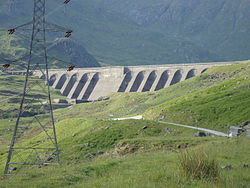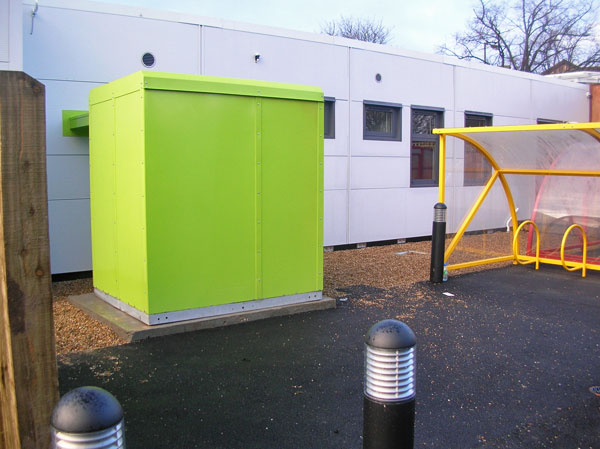Energy Storage
The price of electricity fluctuates across each day and each night. The grid has to plan to meet peak demand which normally comes in the evening as people return from work, put the lights on, plug in their electric cars and want electricity for heating, cooking and showers.
The problem for the grid is that on the supply side generation from wind fluctuates in an unpredictable manner and even photovoltaic generation, which only works by day, is subject to cloud cover. You cannot turn up the wick on a nuclear power station by day and turn it down by night.
Electricity Storage

Energy storage is the key to balancing supply and demand on the electricity grid and so the grid strives to employ “load shifting” techniques to reduce demand at peak loads and transfer it to times of slack demand. There is no such thing as a cheap, efficient electrical battery so the grid employs ingenious techniques such as “pumped storage”: cheap electricity at night is used to pump water uphill in places such as Cruachan and then released to generate hydro-electricity in peak hours by day.
Another technique being developed is to charge customers higher prices for peak electricity and lower prices for “off-peak”. Customers who are sensitive to “demand response” can help to shift their demands for electricity by using time switches to charge their electric vehicles in the middle of the night and other more sophisticated uses of automated demand side management to balance the demands on the grid.
Heat Storage
The principle of grid balancing can be extended to thermal energy storage when electric heating is being used. When electricity is cheap at night, heat pumps can be turned on to take the chill off buildings and store heat in the thermal mass of the buildings – and reduce the need to draw electricity from the grid at peak hours by day. The same principle can be used to use heat pumps to store heat in hot water cylinders by night for use during the day.
Interseasonal Heat Storage
What is less well known is that the ground on which buildings stand can be used as very effective stores of thermal energy over long periods. Ground will store heat energy for months and can therefore be used for interseasonal heat transfer. There is plenty of spare heat energy on hot days in summer and an urgent need for heating in buildings in winter. Heat can be captured over the summer months by using solar thermal panels – or as the by-product of providing cooling – and transferred into the ground using hot water circulating through polymer pipes inserted into boreholes in the ground. Ground source heat pumps can use the same boreholes to extract heat from the ground over the winter months to heat buildings without burning fossil fuels.
Suffolk One Sixth Form College, Ipswich
ICAX captures heat from the bus turning area in summer and transfers heat to the ground – by means of circulating fluid through pipes embedded in the surface and transferring the heat to ThermalBanks in the ground. This warms up a large volume of ground over the summer months – from its natural temperature of 10°C up to 30°C.
Solar Thermal Collector for Interseasonal Heat Transfer
collects heat in the summer to charge ThermalBanks
to provide space heating in winter
without burning fossil fuels
In winter ICAX uses GSHPs to recycle the heat back into the building – regularly achieving a CoP of 7 to 8. Much higher than the CoP achieved when extracting heat from cold ground.
The key to successful GSHP installations is good design
The key to a successful ground source installation is good design and this requires an understanding of the thermal properties of the local geology and the thermal needs of the building. If the component parts are not well matched, well balanced, well installed and well controlled – you risk spending money for no significant reward.
The Merton Intergenerational Centre
The Merton Intergenerational Centre is another interesting case study. ICAX extracts heat from the ThermalBank in the ground in winter. How is the heat restored into the ground in summer?
The building, which has a large glazed south facing side, requires cooling in summer. The normal practice on providing cooling is to blow the heat extracted from the building out of roof mounted chillers into the atmosphere – in other words to waste it. That is simply spending money to throw energy away.
Interseasonal Heat Transfer (IHT) is controlled by an ICAX Skid
The ICAX approach is different – we capture the heat from cooling and use it to heat up the ThermalBank in the ground – ready to recycle the heat for the following winter: Seasonal Thermal Energy Storage.
ICAX can also provide much cheaper cooling than an air conditioning chiller can provide – because heat exchanging with cold ground is much more efficient than heat exchanging with hot air.
Instead of fighting to waste heat into hot air, ICAX works with Nature to provide Renewable Cooling – in a radically more efficient way.
This saves money and saves carbon. We believe that BEIS will support Renewable Cooling when it gets round to seeing the advantages in carbon saving.
Meanwhile, ICAX is designing and delivering Interseasonal Heat Transfer systems now.
Interseasonal Heat Transfer is the most efficient form of integrated renewable energy system to protect you against future price rises for fossil fuels (which may be vulnerable to the volatile whims of Vladimir Putin).
Interseasonal Heat Transfer integrates:
- Solar thermal collection
- Underground Thermal Energy Storage
- Heat delivery using GSHPs, and
- Renewable Cooling
Those who have correctly connected the rise in the levels of CO2 in the atmosphere to levels over 400 parts per million with the rising water in the Somerset Levels now have the option to choose a heating system that is very low in carbon emissions, because it is based on heat recycling instead of combustion.
Energy storage over time – Energy storage systems
The key problem is the mismatch between energy generation and energy demand. The problems exist over different time scales. Different energy storage systems are used to achieve energy storage over different periods:
- flywheel mechanisms can be used to store and release energy over a period of seconds or minutes
- liquid air mechanisms can be used to store and release energy over days on an industrial scale
- thermochemical energy storage can be used to store and release heat energy repeatedly over months with low heat losses
- thermalbanks can be used to store and release heat energy over seasons on a local scale
ICAX projects using Seasonal Thermal Energy Storage systems:
Howe Dell School
| Suffolk One College
| Merton Community Centre
Tesco Supermarket
| Wellington Civic Centre
See Ground Source Heating See Ground Source Cooling See Ground Source Energy



